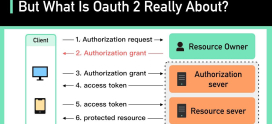
What is Server Security?
Welcome to the digital age, where our lives are like a dance on the internet. With every click and swipe, we share bits and pieces of ourselves. Now, imagine slipping on some dance shoes without securing the floor first—slippery and frantic. That’s our online environment without server security. It may sound a bit mundane, but bear with me! Understanding server security is like getting your dance moves right, ensuring your elegant performance doesn’t go wrong mid-twirl. So, let’s break it down, shall we?
What is Server Security?
At its core, server security refers to the processes and measures that protect a server from malicious threats, theft, and unauthorized access. It’s like putting up a protective barrier around your house—it keeps the bad guys out while allowing the good ones in. This is especially vital for businesses that store sensitive information like customer data, financial details, or intellectual property.
In a way, you could think of a server as a digital vault where all the valuable information is stored. Just like you wouldn’t want a burglar to have easy access to that vault, you must ensure your server isn’t a welcome mat for cybercriminals. The threats aren’t always obvious, either. Just like in those suspenseful thrillers, sometimes it’s the unexpected twists that can cause the most damage.
Why Does Server Security Matter?
So, why should you care about server security? Well, imagine waking up one day to find your personal information splattered across the internet. Or worse, your business’s sensitive data suddenly in the hands of hackers! Panic sets in, right? Here’s a slice of reality—cybercrime is on the rise, and it’s not showing any signs of slowing down.
- Data Breaches: Nearly 60% of small businesses conquer data breaches through financial loss. You don’t want to be part of that statistic.
- Reputation Damage: Once your data is compromised, it could hurt your business’s reputation. As someone who is deeply invested in their work, that’s a hard pill to swallow.
- Compliance Issues: Many industries have regulations to protect sensitive data. Failure to comply can lead to hefty fines. Yikes!
Common Threats to Server Security
Now, let’s dig into the nitty-gritty of the threats lurking around. Much like that shadowy figure in a scary movie, these threats can pop up when you least expect them. Here are some common culprits:
Malware
Think of malware as the villain trying to sabotage our pleasant server party. It can come in many forms, including viruses, worms, and trojans. One wrong click, and bam! The party’s over.
Ransomware
Ah, ransomware—the older sibling of malware. Instead of just messing up files, it locks them away and demands ransom, often leaving the victims at a crossroads: pay up or lose everything. Talk about a high-stakes game!
Phishing Attacks
These sneaky little scams usually involve tricking you into giving up sensitive information through seemingly harmless emails or messages. It’s like getting a fake invitation to a party—ugly surprise waiting around the corner!
DDoS Attacks
In a Distributed Denial of Service (DDoS) attack, hackers overload the server with traffic, making it unavailable to users. Imagine trying to enter your favorite coffee shop, only to find a crowd of people blocking the entrance—frustrating, right?
Strategies to Enhance Server Security
Alright, now that we’ve identified the threats, how do we say “not today” to them? Luckily, there’s no shortage of strategies you can implement. Here are some essential practices that act like your security detail in this digital battlefield:
1. Regular Updates
Staying on top of updates is like checking your seatbelt before a drive. Those seemingly mundane updates often contain essential patches to security vulnerabilities. So, don’t ignore them!
2. Firewall Configuration
A firewall acts as a barrier between your trusted network and untrusted traffic. Think of it as a bouncer at an exclusive club, letting only the right folks in and keeping the riff-raff outside.
3. Use Strong Passwords
Using complex passwords is kind of a no-brainer, but you’d be surprised how often people stick with “123456” or “password.” Challenge yourself! Try creating a password that’s unique and hard to guess. A mix of letters, numbers, and symbols is your best friend here.
4. Regular Backups
Imagine having a backup of every slice of your favorite cake just in case something goes wrong. Regularly backing up your data can save you from data loss disasters. It’s like having a safety net beneath you while performing high dives!
5. Intrusion Detection Systems (IDS)
These systems monitor your network for suspicious activity while alerting you to potential threats. Basically, think of it as your digital watchdog, ensuring everything’s comfy and secure.
6. Educate Yourself and Your Team
Perhaps the wisest move is arming yourself with knowledge. Host regular training sessions for your team on recognizing phishing scams and practicing secure internet behavior. After all, teamwork makes the dream work!
The Role of Hosting Services
When it comes to server security, the choice around hosting services can make all the difference. For instance, take DarazHost. They not only offer user-friendly hosting solutions but also prioritize security. Their integrated security features protect against various threats, giving you peace of mind as you navigate your online ventures.
Think of them as a reliable co-pilot on your digital journey—a fellow passenger who makes sure your ride is as smooth as possible. Their tools, from firewalls to malware scanning, help safeguard your endeavors online, keeping your digital space a haven rather than a battlefield.
Emerging Trends in Server Security
Server security isn’t static; it evolves. Just as our digital world does, so do the threats and the solutions. To stay ahead, let’s check a few trends shaping the scene:
- Zero Trust Security: This bold approach requires verifying every user and device before granting access, like a lockdown party where everyone must show ID!
- AI-Powered Security: Artificial intelligence is stepping in, monitoring networks, and defending against threats in real-time—kind of like having a personal assistant that never sleeps.
- Cloud Security: With more businesses migrating to the cloud, fortified security measures are crucial. Think of it as having both a vault and solid locks on the digital frontier.
A Final Word on Server Security
As we wrap up, remember that server security is not just a box to check—it’s an ongoing practice vital for protecting your digital presence. Whether you’re a small business owner or a casual internet user, the principles of server security apply across the board. We’ve all got something to lose; let’s keep it safe!
FAQs
- What’s the first step in securing a server? Start with a robust firewall and a strong password policy!
- How often should I update my software? Ideally, updates should happen regularly—think monthly or as often as new patches become available.
- Can I manage server security on my own? While it’s possible, partnering with reliable hosting services like DarazHost can significantly lighten the load and enhance your security measures.
- What are signs my server might be compromised? Unusual activity, unexpected changes to files, and sudden performance drops often signal troubles.
So, grab your metaphorical dancing shoes, together let’s pirouette into a safer server environment! With a little effort and awareness, your server can remain a secure hub in our bustling digital dance floor.









